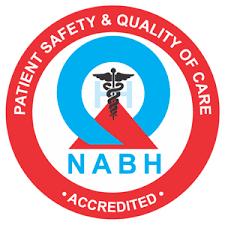The gravity of the problem of Antibiotic resistance is immense. Let us try to illustrate. Antibiotics have started to fail. Resistant bacteria already cause more than 750,000 deaths every year. This number is predicted to rise dramatically if radical actions are not taken.

Antibiotic resistance has become one of the greatest threats to global health.
- Antibiotic resistance kills. 214,000 newborns are estimated to die every year from blood infections (sepsis) caused by resistant bacteria – representing at least 30% of all sepsis deaths in newborns.
- Antibiotic resistance spreads silently across the world. More than 60% of the populations in some areas carry multidrug-resistant bacteria in their normal bacterial flora.
- Antibiotic resistance is costly. It is estimated that the median overall increased cost to treat a resistant bacterial infection is around 700 USD, equal to over one year’s wages of a rural worker in India. Novel treatments for multidrug-resistant infections can cost up to tens of thousands of dollars, making them unaffordable for many.
- Antibiotic resistance is here now. Resistance has already developed to the last-line antibiotics for gonorrhea, which in some cases is nearly untreatable. With 106 million new cases/year, the consequences of total resistance would be devastating.
Antibiotic resistance is alarming, but what is it, how does it happen and what can be done? Let’s start with a little history and science.
Why should we care about this issue?
Antibiotic drugs have revolutionized medicine and made our modern way of life possible. In addition to their essential role in the clinic, antibiotics are used in a huge array of non-medical applications, from promoting growth in livestock to preserving building materials from contamination to treating blight in orchards. However, overuse threatens their efficacy due to the promotion and spread of antibiotic-resistant bacteria.
Antibiotics target and inhibit essential cellular processes, retarding growth, and causing cell death. However, if bacteria are exposed to drugs below the dose required to kill all bacteria in a population (the minimum bactericidal concentration or MBC), they can mutate and resist antibiotic treatment via natural selection for resistance-conferring mutations. These genetic mutations can arise from the adoption of a plasmid encoding a resistance gene or by mutation to the bacterial chromosome itself.
The concern around the increasing prevalence of drug-resistant bacteria is compounded by the fact that the discovery of new antibiotics is a fleeting rare event. Most classes of antibiotics on the market were discovered in the mid-to-late 20th century. Thus, there is a limited arsenal of drugs to fight resistant bacteria, and bacteria can be resistant to multiple drugs at a time.
Given the importance of antibiotics to modern medicine, and the growing apprehension surrounding the threat of resistance, scientists are studying every aspect of antibiotic resistance.
Are bacteria learning to fight back?
Although it seems like bacteria are in some way ‘learning’ how to fight back against us, the development of antibiotic resistance is an inevitable and natural part of bacterial evolution. Each time a bacterium multiplies, it divides into two and copies its DNA.
Imperfections in this process mean that in a population of millions, billions, or even trillions of multiplying bacterial cells, there are lots of ‘mistakes’, know as mutations, in the DNA of each successive generation.
Owing to the sheer number of variants, over time a tiny proportion of individuals will, by chance, develop a quirk that means they are immune to certain antibiotics. A mutation may, for example, subtly change the structure of a key molecule that the antibiotic targets, rendering it ineffective. Or, it may mean the bacteria start producing a chemical that destroys the antibacterial properties of the drug.
What’s causing the problem?
Antibiotic resistance becomes a big problem when antibiotics are overused. Using an antibiotic destroys a lot of bacteria in a person’s body – both good and bad strains. Antibiotics are found to be used indiscriminately, like taking wrong antibiotics or inappropriate dose and for the inappropriate duration; patients not taking the full course of antibiotics as they stop it soon after feeling better, using antibiotics for viral diseases, etc. These types of misuses lead to the rise of antibiotic resistance. The more often antibiotics are used, the more likely it is that drug-resistant bacteria will come to dominate in any given location. And it’s not just human medicine that helps spread antibiotic resistance.
Antibiotics are also given to animals for disease prevention and growth promotion. Such antibiotics expose a large number of animals and thus bacteria, for more extended period, and at lower doses. This leads to the evolution of resistance. Consuming the animals as food or by close contact with such animals, humans get such resistant bacteria. Antibiotic-resistant bacteria from the hospital, poultry farm, or any other place spread in the environment. These bacteria cause infectious diseases which are difficult to treat.
What you can do to help?
To help fight antibiotic resistance and protect yourself against infection:
- Don’t take antibiotics unless you’re certain you need them. An estimated 30% of the millions of prescriptions written each year are not needed. Always ask your doctor if antibiotics will really help. For illnesses caused by viruses — common colds, bronchitis, and many ear and sinus infections — they won’t.
- Finish your pills. Take your entire prescription exactly as directed. Do it even if you start feeling better. If you stop before the infection is completely wiped out, those bacteria are more likely to become drug-resistant.
- Get vaccinated. Immunizations can protect you against some diseases that are treated with antibiotics. They include tetanus and whooping cough.
- Stay safe in the hospital. Antibiotic-resistant bacteria are commonly found in hospitals. Make sure your caregivers wash their hands properly. Also, ask how to keep surgical wounds free of infection.
- Prevent transmission of pathogen: The patient should maintain proper hygiene and sanitization; hand washing should be promoted, direct contact with the patient should be avoided to prevent the spread of communicable disease.
Check out our recent blog – https://www.saideephospital.com/2021/01/15/muscular-dystrophy-the-neurological-weakness/
Visit here for regular health updates – https://www.instagram.com/saideephealthcareofficial/


